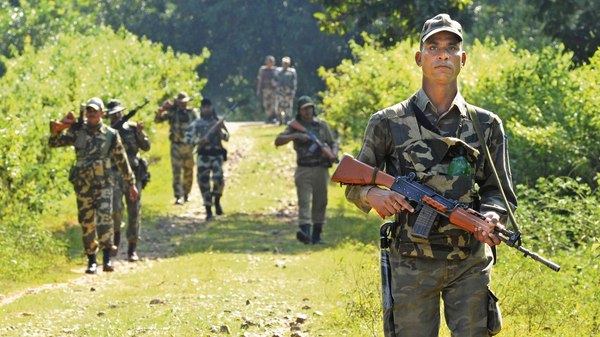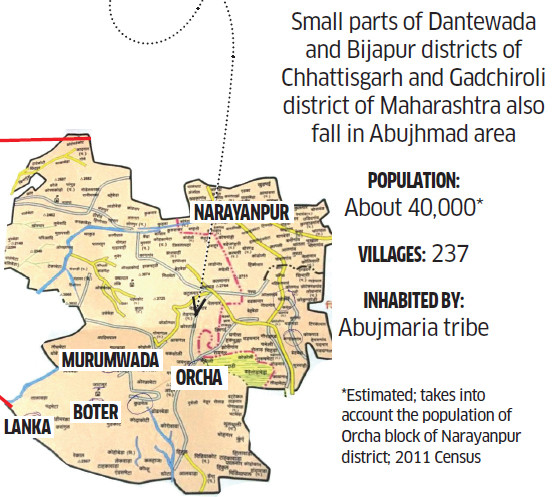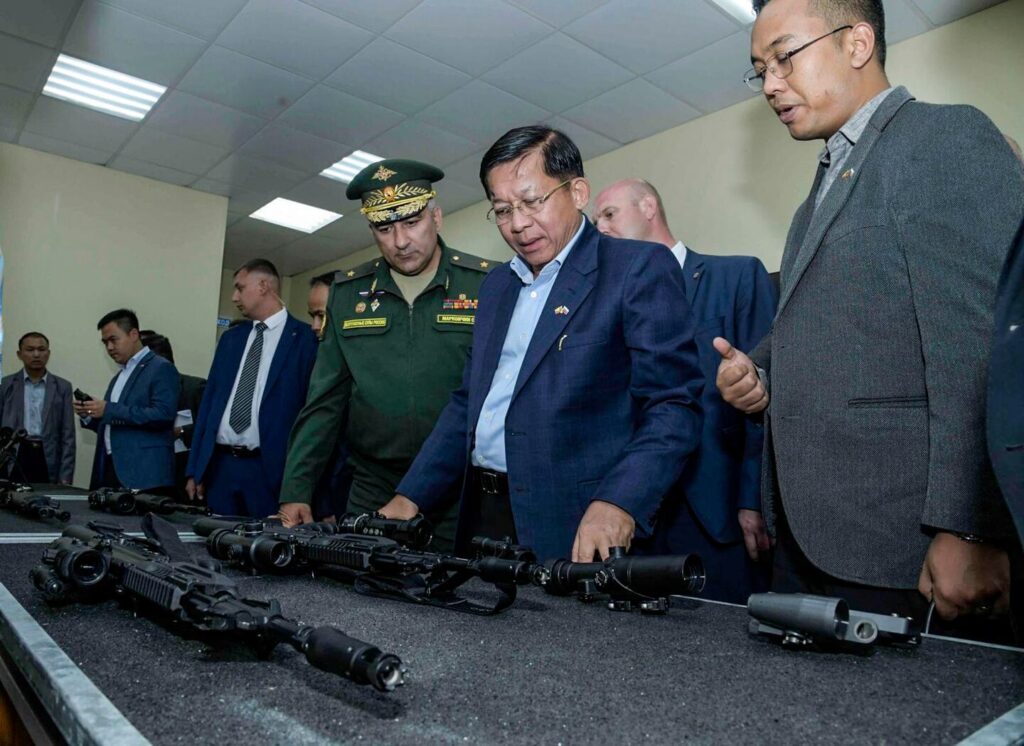MANTRAYA ANALYSIS#40: 25 SEPTEMBER 2019
BIBHU PRASAD ROUTRAY
Abstract
Since 2018 (till August 2019), over 350 cadres of the Communist Party of India (CPI-Maoist) have been killed in various states of India. Rapid cadre depletion and continuous security force operations have dented the group’s ability to organize violence. This success is largely due to a systematic strategy adopted by the security planners since 2014 to penetrate deep into the core areas of the group and establish permanent camps. If persisted, even in the face of kinetic losses to the security forces, this strategy would be able to weaken the group considerably and may even compel the group to opt for negotiations with the government.

(Representational Image, Courtesy: LiveMint)
Shadow boxing in the ‘Unknown Territory’
In August 2019, a team of the District Reserve Group (DRG) of the Chhattisgarh police consisting exclusively of tribal young men conducted a deep-penetrating operation[1] into Abujhmaad, the infamous core area of the CPI-Maoist. The target was an ongoing training camp of the extremist group. Five cadres were killed in the ensuing encounter. It was a significant operation considering the fact that, for decades, this core area of the extremist organization has remained more or less free from security force action.
Abujhmaad, in Gondi language, translates into ‘the unknown territory’. However, the level of nescience with the forested region, spread over 4000 square kilometres, is mostly with the security forces. Inhabited by about 40,000 people[2], it includes most of Narayanpur district as well as parts of Dantewada and Bijapur districts of Chhattisgarh and Gadchiroli district of Maharashtra. It is ‘possibly the only piece of land in the country where there is no revenue map as yet; villagers have no title deeds (patta) to the land they live in or cultivate’[3].
Maoists (interchangeably referred to as ‘Naxals’), on the other hand, since the 1990s, have turned interior parts of Abujhmaad into a safe area. This is where the outfit’s top leadership is based; training camps are organized; and the arms repairing and explosives assembly units are located. In the absence of any worthwhile operation in the area, fables and hearsay have dominated the imagination of security forces. For instance, during a previous attempt to move inside Abujhmaad, some uninitiated personnel spoke to the media of possible encounters with hydra-headed monsters. The August 2019 operation, therefore, was sort of an eye opener and busted several myths. The Chhattisgarh police chief, in an interview, said that the camp under attack had a four-tier security system[4], which possibly allowed several extremists minimize losses and flee during the operation.

(Abujhmaad, the core area of the CPI-Maoist, Photo Courtesy: Times of India)
Widening the Net
The August 2019 operation inside Abujhmaad was an attempt by the security forces (both the police and central forces) to end the sense of safety enjoyed by the CPI-Maoist and target its core strength. At the same time, such an operation is a critical part of the state’s offensive strategy that seeks to establish presence and dominance of security forces in extremist stronghold areas. Such deep penetrating operations appear to have started sometime in 2014 and 2015, with security force camps being set up in interior areas of Naxal strong holds. Unlike previous occasions when security forces operated from their camps in district or sub-divisional headquarters, which limited their ability to penetrate deeper into the core areas, the newly set up camps have become the starting point for operations. These camps have also provided security to the infrastructure building projects in the remote areas. Each camp housed about 200 to 250 security force personnel and came with elaborate security arrangements to prevent being attacked and run over by the extremists.
Maoist Strategy
Initially the extremists desisted from attacking these camps. However, attacks started in May 2015 and have since continued intermittently.
- In May 2015, four personnel were injured when a group of suspected Naxals attacked the Basing police camp under Kurusnar police station limits in Narayanpur district in the wee hours. Armed Naxals hurled crude bombs shortly after midnight following which a gun-battle broke out and lasted for two hours.[5]
- In May 2016, Maoists launched a major pre-dawn attack on a Central Reserve Police Force (CRPF) camp in the forested Rangareddy region in Gangloor of Bijapur district. A CRPF jawan was killed by a sniper shot as all entry points to the camp were ambushed by the Maoists.[6]
- In June, about 15 to 20 Naxals, fired rockets and opened heavy gunfire at an Indo-Tibetan Border Police (ITBP) camp situated at Ranapal, on the border of Kondagon and Narayanpur district of Chhattisgarh in the wee hours. The attack, however, did not result in casualty.[7]
- In July 2018, about 100 Naxals surrounded the same ITBP camp in Ranapal area at midnight, fired four rockets, and fled after the forces retaliated.[8]
Clearly, such attacks neither have been effective nor have they deterred the security forces in these ‘forward’ camps from carrying out their operations.
As a backup counter strategy to slow down the pace and frequency of operations, extremists since 2017, have started increasingly relying on Improvised Explosive Devices (IEDs) to ambush the forces. Since the forces lack ‘gadgets or equipment to detect a hidden IEDs’[9], this mode of attack has taken a heavy toll on the forces. According to the MHA, between 2017 and August 2019, 73 troops have killed and another 179 have been injured in IED explosions in various states. Maximum number of such casualties have been reported in Chhattisgarh. A total of 43 such incidents took place in 2017, rose to 79 in 2018, and over 51 have been recorded till August 2019. This necessitated launch of an operation, using small teams of trained canines and personnel, to detect and diffuse the IEDs in September 2019.[10] Over 1500 IEDs have been recovered between 2017 and August 2019.
Impact Assessment
Notwithstanding the losses suffered by the forces, the forward moving strategy has started paying off in two significant ways. Firstly, some of the key development cum strategic projects such as building of roads, installation of mobile towers, construction or renovation of bridges and schools have either been completed or have been progressing well in the erstwhile extremist strongholds. A revenue survey was initiated in Abujhmaad in 2015 by the Chhattisgarh Revenue Department which conducted aerial survey of total 237 villages with the help of the Hyderabad-based National Remote Sensing Agency.[11] In April 2017, a revenue survey was conducted mostly in areas around the security camps. with the help of a team from Indian Institute of Technology (IIT)-Roorkee, but the process did not make headway because of lack of infrastructure and security concerns. A fresh attempt was initiated in August 2019 by the revenue department of the state of Chhattisgarh.
Secondly, encounters initiated by the security forces have been able to neutralize extremists in the areas abutting the core zones quite regularly. Although the August 2019 operation into Abujhmaad has not yet been repeated, ample evidence is available to indicate that the extremists are being squeezed into a much narrower patch of territory. This is evident from the steep decline in the violence orchestrated by the extremists, and also an internal assessment by the CPI-Maoist leadership. The group’s former general secretary Ganapathy admitted in an interview in early 2019 that “…counter-revolutionary offensives and our subjective mistakes and weaknesses are the main reasons for the weakening of the revolutionary movement for the past eight years.”[12]
How far from finish?
Around 18,000 security force personnel and drones were deployed around 273 police stations for the by-poll of a lone assembly seat in Chhattisgarh’s Dantewada on 23 September.[13] Close to 56 percent of the 188263 eligible voters cast their ballot.[14] The seat had fallen vacant due to the killing of the member of the legislative assembly (MLA) Bhima Mandavi in April 2019 in an ambush by the security forces in at the Shyamagiri hills. The killing as well as the security ‘bandobast’ for the polls are indicative of the persisting threat of the extremists, even in areas beyond the Abujhmaad core. A large number of voters from remote areas in the 23 September poll had to be ferried on boats and vehicles by the security forces to the polling booths. According to an estimate of the Chhattisgarh police, the CPI-Maoist, in spite of its weakness, still has a cadre strength of 6000, which includes 1000 armed cadres[15]. The rest are supporters.
The Ministry of Home Affairs has declared its intention of ‘uprooting the problem’ quickly. That is not likely to happen, in spite of the additional deployment of forces and a series of steps which have been taken to boost their morale. A victory, however, is still possible in the medium term of three to five years. The key is to persist with the strategies adopted thus far and to supplement them with governance and inclusive development measures that seek the assure the affected people in the region of the good intentions of the government. Accountable bureaucracy, highly motivated and trained security forces, and committed politicians would have to remain three integral pillars for the counter-insurgency operations to succeed.
End Notes
[1] “5 Maoists Killed, 2 Jawans Injured In Gunfight In Chhattisgarh”, Outlook, 24 August 2019, https://www.outlookindia.com/website/story/india-news-5-maoists-killed-2-jawans-injured-in-gunfight-in-chhattisgarh/337022. Accessed on 16 September 2019.
[2] Population of Orcha block of Narayanpur district, according to 2011 census.
[3] Shantanu Nandan Sharma, “Red ‘Republic’ of Abujhmad: Inside the unknown hills of south Chhattisgarh”, Economic Times, 11 March 2018, https://economictimes.indiatimes.com/news/politics-and-nation/this-region-in-india-doesnt-exist-on-map-has-no-govt-administration/articleshow/63248101.cms. Accessed on 23 September 2019.
[4] “There is only one way of solving Naxalism and that is ethical security and ethical governance”, Times of India, 2 September 2019, https://timesofindia.indiatimes.com/blogs/Tic-Tac-Toe/there-is-only-one-way-of-solving-naxalism-and-that-is-ethical-security-and-ethical-governance/. Accessed on 23 September 2019.
[5] “Four jawans injured in Naxal attack in Chhattisgarh’s Narayanpur district”, Economic Times, 27 May 2015, https://economictimes.indiatimes.com/news/politics-and-nation/four-jawans-injured-in-naxal-attack-in-chhattisgarhs-narayanpur-district/articleshow/47445507.cms?from=mdr. Accessed on 20 September 2019.
[6] “Naxals attack CRPF camp in Chhattisgarh, one jawan killed”, Livemint, 17 May 2016, https://www.livemint.com/Politics/fNdGq3vYbmCn9EaTHHANWL/Naxals-attack-CRPF-camp-in-Chhattisgarh-one-jawan-killed.html. Accessed on 20 September 2019.
[7] Pavan Dahat, “Naxals attack ITBP camp in Chhattisgarh”, Hindu, 9 June 2016, https://www.thehindu.com/news/national/Naxals-attack-ITBP-camp-in-Chhattisgarh/article14412699.ece. Accessed on 20 September 2019.
[8] “Naxals attack ITBP camp in Chhattisgarh; fire rockets”, Economic Times, 14 July 2018, https://economictimes.indiatimes.com/news/defence/naxals-attack-itbp-camp-in-chhattisgarh-fire-rockets/articleshow/52667418.cms?from=mdr. Accessed on 20 September 2019.
[9] “Over 260 troops killed or injured in Naxal IED blasts, forces launch operations”, India Today, 19 September 2019, https://www.indiatoday.in/india/story/naxal-ied-blasts-forces-launch-operations-naxal-ied-blast-1600959-2019-09-19. Accessed on 22 September 2019.
[10] The CRPF has tasked its Pune based specialized institute the Indian Institute of IED Management, to analyze the technology of these IEDs in circulation, create awareness material for forces and also study new prototypes being developed. Ibid.
[11] “Govt finishes massive aerial land survey of Bastar villages”, Pioneer, 18 April 2015, https://www.dailypioneer.com/2015/state-editions/govt-finishes-massive-aerial-land-survey-of-bastar-villages.html. Accessed on 23 September 2019.
[12] Vivek Deshpande, “Maoist movement sliding for past eight years: Ganapathi”, Indian Express, 2 September 2019, https://indianexpress.com/article/india/maoist-movement-sliding-for-past-eight-years-ganapathi-5957702/. Accessed on 23 September 2019.
[13] “Voting begins for Dantewada Assembly bypoll in Chhattisgarh”, India Today, 23 September 2019, https://www.indiatoday.in/india/story/voting-begins-for-dantewada-assembly-bypoll-in-chhattisgarh-1602087-2019-09-23. Accessed on 23 September 2019.
[14] “Dantewada bypoll: In a first, 1200 tribals cross swollen river to cast vote defying Maoist diktat”, New Indian Express, 24 September 2019, http://www.newindianexpress.com/good-news/2019/sep/23/dantewada-bypoll-in-a-first-1200-tribals-cross-swollen-river-to-cast-vote-defying-maoist-diktat-2037996.html. Accessed on 25 September 2019.
[15] “There is only one way of solving Naxalism and that is ethical security and ethical governance”, op.cit.
(Dr. Bibhu Prasad Routray is Director of Mantraya. This analysis is published as part of Mantraya’s ongoing “Mapping Terror and Insurgent Network” and “Fragility, Conflict & Peace Building” projects. Mantraya analyses are peer reviewed publications. The author can be contacted at bibhuroutray@gmail.com.)




